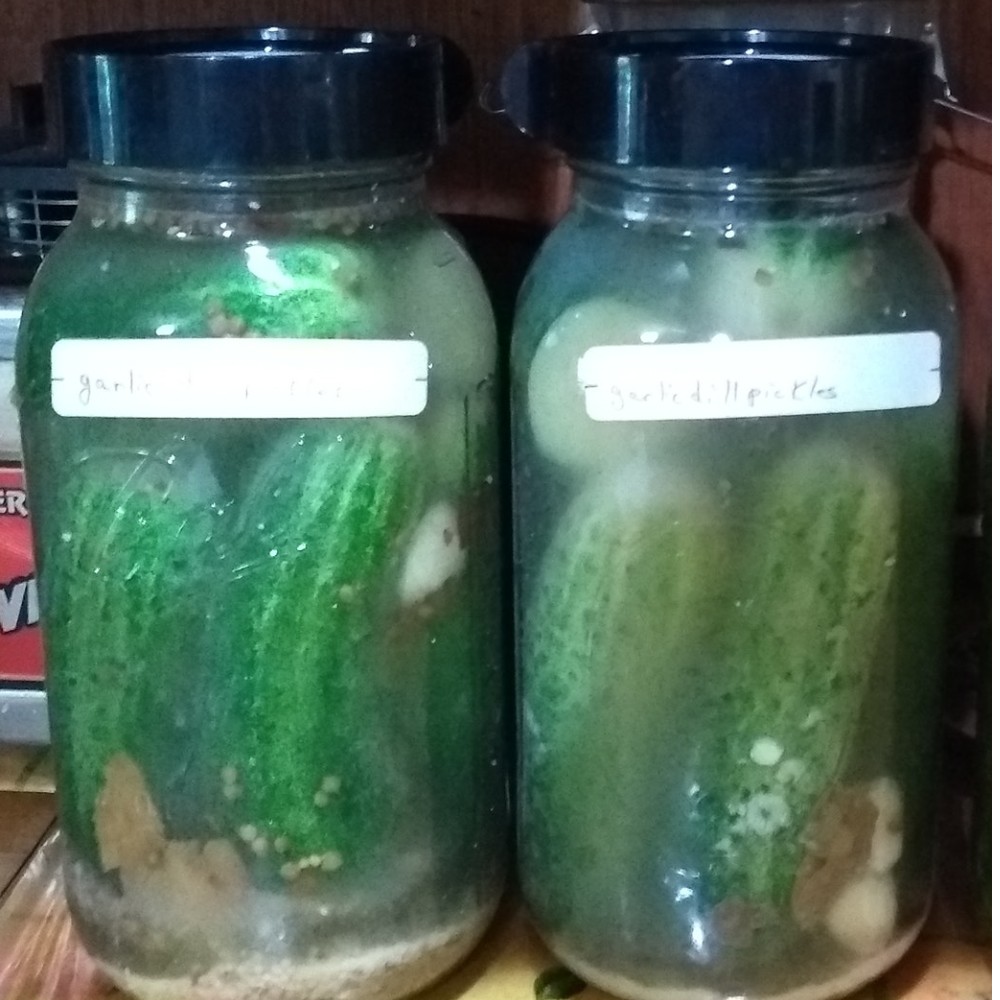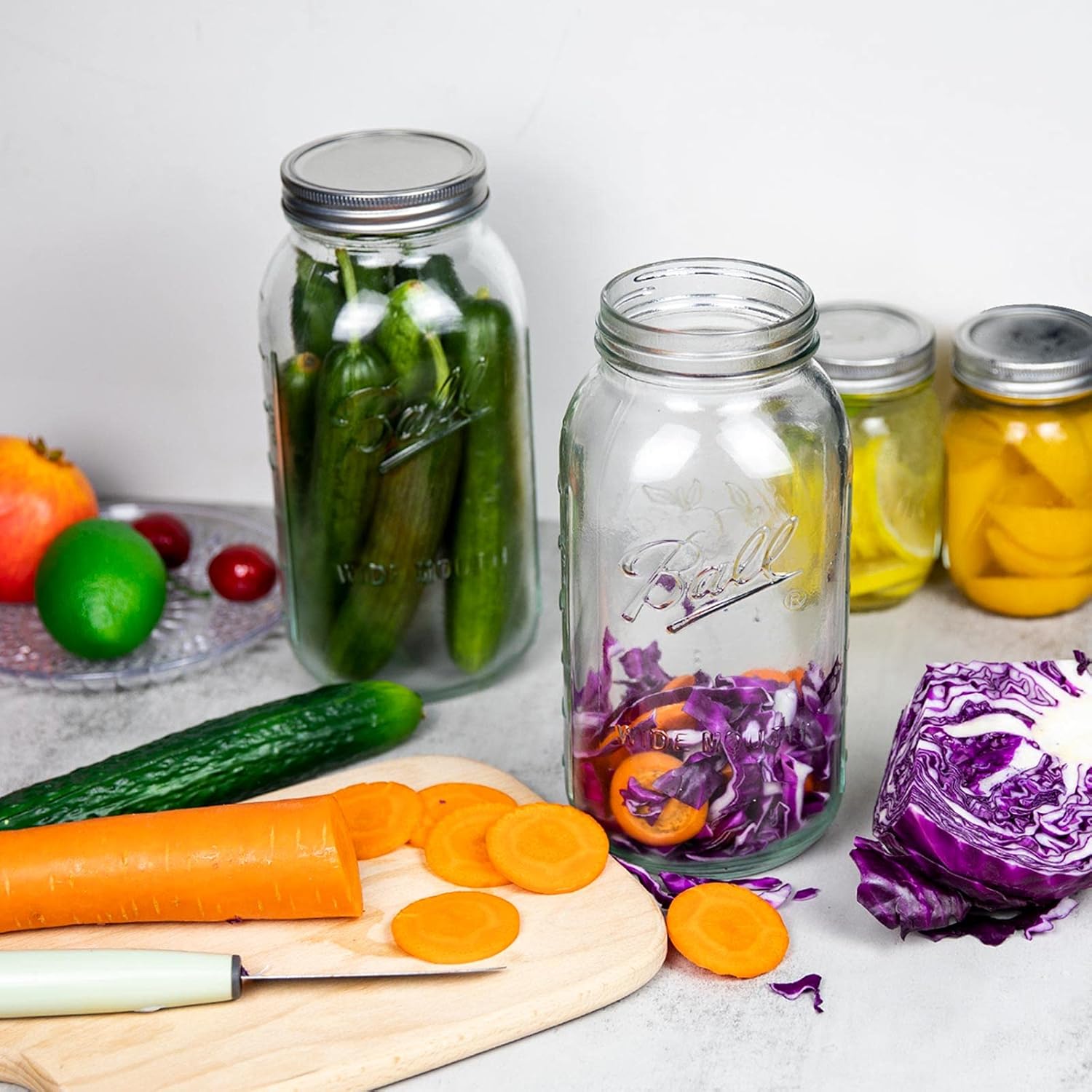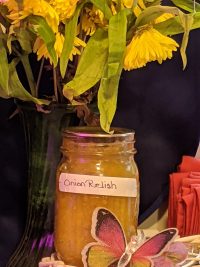
I was never a huge fan of dill pickles, but my fondness for both Amanda’s Big Mac salad and my Reuben RBS has had me going through a heck of a lot more than I ever have before. I made a couple gallons last year and ran out!
Of course, you can use any dill pickles in these salad recipes, but I strongly prefer fermented pickles for the probiotic benefits. You can identify fermented pickles in the grocery because they will be in the refrigerator section – if they’re closed tight and still fermenting, they’d explode! Additionally, they won’t have vinegar as an ingredient. Finally, they won’t be pasteurized as that kills all the probiotics.
When I ran out of my own pickles, I bought Ba Tampte brand garlic dill pickles at my Wegmans.
But I prefer my own homemade ones, made from organic cucumbers bought in a bulk from my favorite local farmer.
Fermentation Equipment
 my fermentation kit (affiliate link)
my fermentation kit (affiliate link)There’s a number of ways that you can ferment. Historically, it was done in a large crock, with the vegetables submerged under an appropriate brine and held done by a weight. In my experience, sometimes this works, and sometimes you get a moldy mess.
I feel that as far as moldy cukes go: ain’t nobody got time for that!
The ideal fermentation requires an airlock, so that mold spores and outside bacteria can’t touch the cucumbers, while allowing the gases produced by fermentation to escape. I use the kit shown to the right, which fits any wide-mouth canning jar.
 wide mouth half gallon jars (affiliate link)
wide mouth half gallon jars (affiliate link)Unfortunately, the half gallons are a tad expensive; I have 6 and guard them closely! I can’t find any actual gallon jars that fit wide-mouth canning lids, so stick to the half gallons.
hint
The recipe itself is pretty simple, though I suggest not following the (very bad) photo; it was a tad tricky to extract those whole cucumbers for storage in different jars (necessary so I could use my limited half gallons for more ferments). This year, instead I cut the cucumbers into spears so they’d be easier to extract.
Safe Brining
Regardless of the fermentation system you choose to use, the most important bit is having an appropriate brine. The right level of salt allows the beneficial lacto-bacteria to grow while preventing inappropriate bacteria from growing.
For dill pickles, I use a 5% brine. The volume of salt required depends on the type of salt you are using, as the size of the grains can vary. (Note: iodized salt is not recommended for pickling). Rather than try to figure out exactly how much you should measure by volume, it is simpler to weigh the salt.
The water used is critical also; chlorinated water may well kill off the lacto-bacteria necessary to do the fermentation. A standard Brita filter will remove the chlorine.
GARLIC DILL PICKLES – Makes two 1/2 gallons.
INGREDIENTS
- 4 lbs small cucumbers (around 13)
- 4 TB pickling spice, divided
- 8 fresh dill flowers (or 4 tsp dried dill weed), divided
- 4 bay leaves, divided
- 4 cloves garlic (peeled), divided
- 18 whole peppercorns, divided
- 3.3 oz salt (94 gm)
- 2 quarts non-chlorinated water
- liquid (whey) drained from plain yogurt (optional)
METHOD
- Sterilize two 1/2 gallon wide-mouth jars in boiling water.
- Wash cucumbers; trim off blossom end. For larger ones, quarter lengthwise.
- Remove sterilized jars to folded kitchen towel after draining.
- In bottom of each jar, place half the dill, bay, garlic and pepper.
- Stuff each jar with cukes, standing vertically, to fill the bottom. If you have room, lay a few cukes on top. You’re going to want to cover them with liquid, but have about an inch of space on top, so stuff jar accordingly.
- Measure 2 quarts filtered water and stir in 1/2 cup unground sea salt. Mix in any available whey off yogurt or add a tsp of yogurt.
- Pour brine over cucumbers, using weights of some sort to keep them below the liquid level if needed.
- Put on the air lock according to the manufacturers instructions and leave to ferment at room temperature for 3 days.
- Replace airlock with normal lid (loosely), label and refrigerate.

